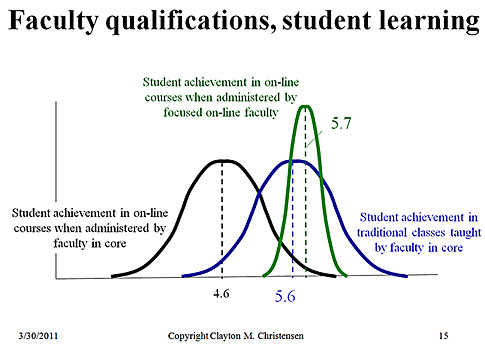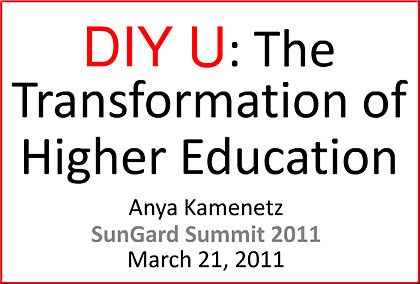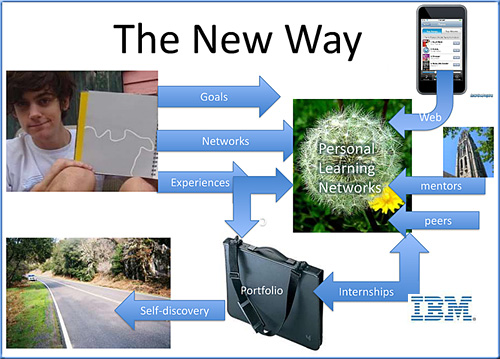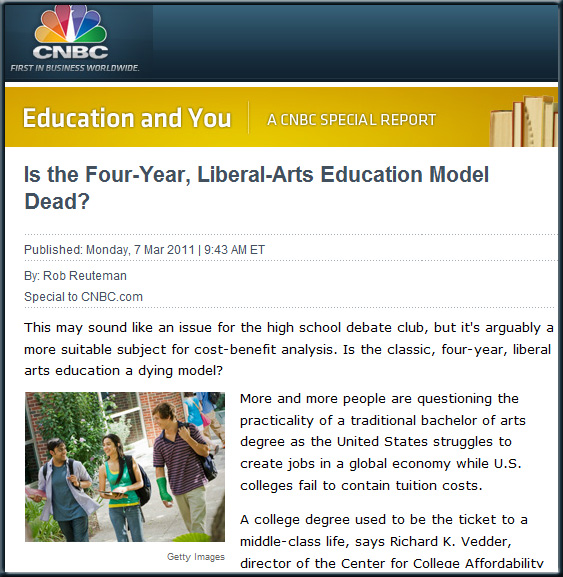From DSC:
Not that I’m on board with everything here…but the following excerpt from Rethinking colleges from the ground up — from the World Future Society by Thomas Frey — is worth reflecting upon; and so are some of the questions listed at the bottom of this posting.
(NOTE: You may need to be a member to access this article in its entirety; emphasis DSC)
So What’s Changed
The obvious question to start with is simply, “What’s changed?”
Why is it that an education system that has produced some of the world’s top scientists, engineers, and business executive is no longer good enough to serve today’s young people?
The answers can be found in the following five areas:
- From information poor to information rich
- Fierce competition
- The cost to benefit ratio is changing
- New times require new intelligence
- Shift from individual intelligence to group intelligence
The following are but a few of the reasons why changing times demand different solutions…
…
Colleges are being pushed in a number of directions but the big dividing points will be oriented around in-person vs. online, and for the in-person side of the equation, doing the things in-person that cannot be done through online education.
Also see:
- Education and the New Normal — The WorldFuture 2011 Education Summit | July 7-8, 2011 | Sheraton Vancouver Wall Centre Hotel, Vancouver, BC, Canada
What does the “new normal” of shrunken classroom budgets, greater reliance on information technology and the ongoing science and math skills shortage mean for the future of education? Join fellow futurists this summer in Vancouver to solve these and other questions during our two-day WFS-exclusive Education Summit. This year’s speakers include FUTURIST magazine authors Maria H. Andersen, David Pearce Snyder, and Tom Lombardo among many others.
Sessions include:
- Defining the “New Normal” for Education
- Education as a Service
- Where’s the “Learn This” Button?
- Learning in Depth: A Simple Innovation That Can Transform Schooling
- A New Education Vision: Reinventing School-to-Employment Systems for Knowledge-Based Global Economies
- The New Tech Network
- Jump-Start Your Career as a Foresight Educator
- Reinventing Educational Activism by Creating Linkages: Technology, Content-Driven Collaboration, and Financial Literacy
- A New Century: A New Instructional Paradigm
- Educating the Wise Cyborg of the Future
- Deconstructing the Education Monopoly in the United States
- Futurists and the Future of Education
WorldFuture 2011 Education Summit: $295 for WFS members/$345 for nonmembers. Learn more and register here.













